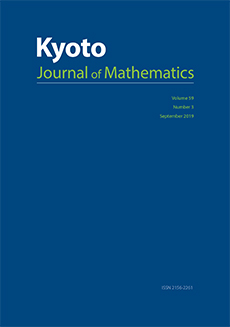Abstract
Questions that seek to determine whether a hyperplane arrangement property, be it geometric, arithmetic, or topological, is of a combinatorial nature (i.e., determined by the intersection lattice) are abundant in the literature. To tackle such questions and provide a negative answer, one of the most effective methods is to produce a counterexample. To this end, it is essential to know how to construct arrangements that are lattice equivalent. The more different they are, the more efficient it will be. In this paper, we present a method to construct arrangements of complex projective lines that are lattice equivalent but lie in distinct connected components of their moduli space. To illustrate the efficiency of the method, we apply it to reconstruct all the classical examples of arrangements with disconnected moduli spaces: MacLane, Falk–Sturmfels, Nasir–Yoshinaga, and Rybnikov. Moreover, we employ this method to produce novel examples of arrangements of eleven lines whose moduli spaces are formed by four connected components.
Citation
Benoît Guerville-Ballé. "On the nonconnectedness of moduli spaces of arrangements: The splitting polygon structure." Kyoto J. Math. 65 (1) 153 - 170, February 2025. https://doi.org/10.1215/21562261-2024-0011
Information





